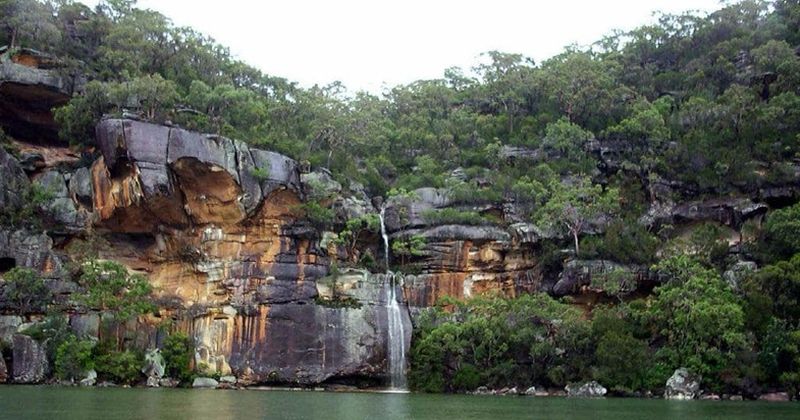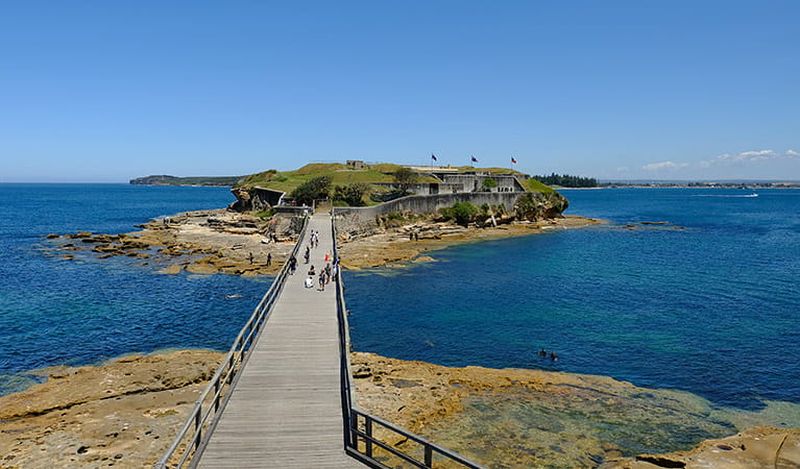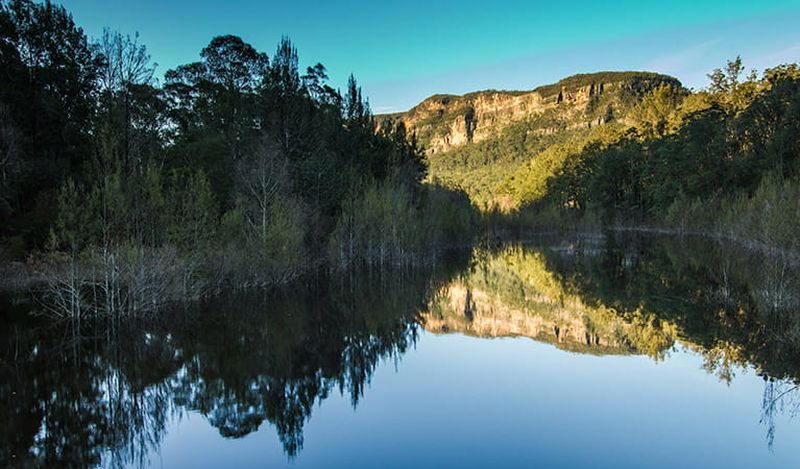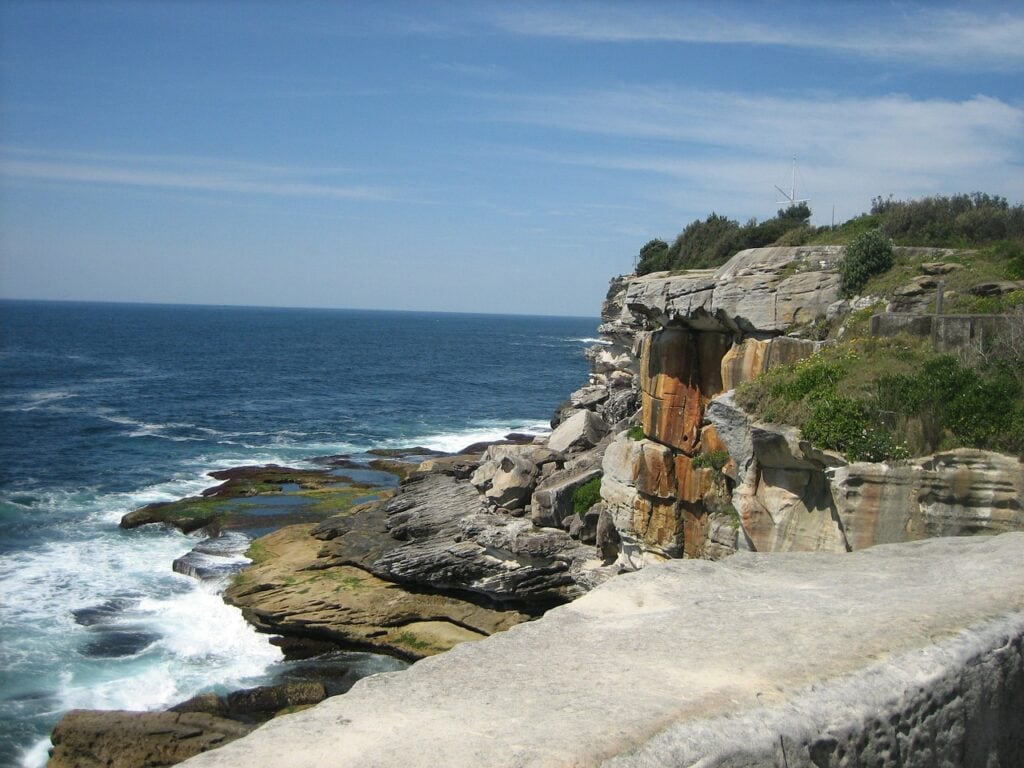If you’re visiting Sydney, Australia and want to experience the wonders of nature without leaving the city, then there are a few national parks that should be on your list.
Cities are unique places, bursting with diverse cultures and extraordinary experiences. But now and then, it feels good to slow down, escape the urban jungle and get back to nature.
Most people don’t think of nature breaks when visiting a city. But Sydney has spectacular national parks where wilderness, culture and colonial heritage overlap.
One of the perks of living in Sydney is that various National Parks surround it. So it’s straightforward to escape the hustle and bustle of Sydney and discover the natural beauty that these parks have to offer.
There are currently more than 200 registered National Parks in Sydney and New South Wales, some tiny and others the size of a country. Each park has its own unique characteristics so that you will never run out of new things to discover.
If you’re looking for an adventure in Sydney, look no further than the National Parks. There are so many different parks to explore and experience that you’ll never run out of places to go.
Not only will you find beautiful landscapes and wildlife, but each park offers a variety of recreational activities, from camping to hiking or bike riding, depending on your mood or preference.
In this blog post, we have highlighted some of our favourite parks in Sydney that every tourist should visit while they are visiting Australia’s most populous city!
1. Royal National Park
By far one of the most popular national parks near Sydney, the Royal National Park is a gift that keeps on giving. A place rich with First Nations rock engravings, shell middens, rock shelters with drawings and stencils and grinding grooves, before European settlement began, this area was home to the Gweagal people, a Dharawal speaking clan.
What list of Sydney’s nearby national parks would be complete without the majestic OG? Less than an hour from the hustle and bustle of Sydney’s CBD, you’ll find a whopping 15,091 hectares of bushland hugging the coast south of the city.
A day trip or school excursion to Royal National Park in Sydney’s south will offer plenty of opportunities for barbecues, fishing, bushwalking, birdwatching and whale watching.
Sydney’s heritage-listed Royal National Park is affectionately known to locals as the ‘Nasho’ or just ‘the Royal’.
Established in 1879, it’s the world’s second-oldest national park. It features unique heritage attractions, along with fascinating plants, birds and animals. Perfect for bushwalking, cycling, surfing, picnicking or whale watching, this diverse park offers everything from beaches to rainforests.
The Royal National Park in Sydney’s south was founded in 1879 and is Australia’s oldest national park. It’s known for its rugged cliffs, windswept beaches and indigenous rock art.
Travel by train to Cronulla, then by ferry to Bundeena, where you can rent a kayak and paddle on tranquil waterways. Don’t miss a swim at pretty Wattamolla Beach.
You can enjoy island picnics, foreshore walks in enchanting forests, and learn about the city’s history and heritage while overlooking iconic attractions in Sydney Harbour National Park. Catch a Captain Cook Cruises’ ferry from Circular Quay to Shark Island, with its stunning views of the city skyline and harbour.
You can expect a myriad of adventures at your fingertips here with overnight hikes and a bunch of epic swimming spots for summer, including Wattamolla Falls, Karloo Pools and Olympic Pool—a place called “the best swimming spot” in the national park that stretches 60 metres.
Located near Cronulla within an hour’s drive from the Sydney CBD and Wollongong, the 16,000 hectare Royal National Park is like a big beautiful backyard. Whether you come for a morning jog or a week-long camping holiday, you’ll discover something new each time.

2. Ku-ring-gai Chase National Park
Located in Sydney’s north, Ku-ring-gai Chase National Park combines important history with scenic beauty, perfect for school excursions. Bobbin Head is a great place for a family picnic, and parts of the park are ideal for cycling, fishing and bushwalking.
Where the Hawkesbury River meets the sea, overlooking the insular peninsula of the Northern Beaches, some 15,000 hectares of dense forests, hidden coves and sheltered beaches are waiting for you.
Australia’s second-oldest national park, Ku-ring-gai Chase National Park, is a recreational favourite for locals and visitors alike. This large park, located in Sydney’s north, lets you feel at one with nature without leaving the Sydney metropolitan area. A heritage-listed park, it combines important history with scenic beauty.
If you want to keep one eye on civilization, you can catch the ferry from Mackerel Beach Wharf across the sapphire expanse of Pittwater to Palm Beach, where you’ll find bijou cafés and waterfront diners.
But not before you’ve had the chance to take in the stunning views at West Head Lookout, perfectly positioned by the mouth of the Hawkesbury with the Barrenjoey Lighthouse in the distance.
Winding creeks and stretches of the ocean meet rainforest and eucalypts, rocky cliffs and mangroves. Camp at The Basin or spend your time exploring walking tracks, mountain biking trails, breathtaking lookouts and significant Aboriginal sites.
You’ll still have plenty of time to discover its marinas, cafes, kiosks and well-equipped picnic areas.
It is located in one of Sydney’s wealthiest municipalities, stretching from St. Ives North and Wahroonga in the south to Broken Bay in the north. Every visitor to Sydney should take in the West Head lookout, with its views over the mouth of the Hawkesbury, the beginning of the Central Coast, Barrenjoey Lighthouse and Palm Beach.
Walking tracks lead to significant examples of Aboriginal rock art. Guided walks and canoe and boat tours can also be arranged.
3. Blue Mountains National Park
Explore World Heritage-listed Blue Mountains National Park, home of the famous Three Sisters in Katoomba. Discover iconic lookouts and waterfalls, historic walking tracks, mountain biking, Aboriginal culture, adventure sports, and camping – right on Sydney’s doorstep.
There’s an excellent reason why the epic vistas of the Blue Mountains are World Heritage-listed. Several.
Firstly, it has some of the most breathtaking geological formations, gorges and waterfalls anywhere in the country, many of which are essential sacred sites for the Gundungurra and Darug peoples who have called these lands home for thousands of generations.
Secondly, it boasts a unique diversity of vegetation, including certain species of eucalypts that are found here and nowhere else in the world. It’s also one of the largest national parks of its type in the country (the top spot goes to Kosciuszko National Park, also in NSW), covering more than a million hectares.
The Blue Mountains region is arguably one of New South Wales’s most popular tourist and weekend-getaway destinations.
Just over an hour away from Sydney, this World Heritage-listed area is home to a great variety of bushwalking tracks, waterfalls, deep valleys and canyons and numerous lookout points with breathtaking views.
The Blue Mountains is a true paradise for bushwalkers with hundreds of exciting walking tracks to choose from. Some of these hikes have been around for more than a century, while others have only been opened to the public in recent years.
The Blue Mountains have no shortage of impressive lookout points that offer breathtaking views of valleys, mountains, waterfalls and canyons. Some of these lookouts are easy to get to, while others are far away from civilization.
With so many creeks and rivers flowing through the Blue Mountains, it’s not a surprise that there are quite a few waterfalls here and there. Some of these waterfalls even have natural swimming holes, which makes for a great outdoor adventure.
It’s almost beyond belief that such world-beating natural beauty can be reached in little more than an hour’s drive from central Sydney.

4. Sydney Harbour National Park
Sydney Harbour National Park protects islands and foreshores around Sydney Harbour. Explore Sydney’s history on a school excursion or guided tour to enjoy coastal walks, picnics and swimming.
One of the most beautiful National Parks in the Greater Sydney area is located in the city’s backyard: the incredible Sydney Harbour.
Middle Head is one of Sydney Harbour’s seven headlands. Enjoy scenic views of Sydney Harbour from the lookout, or take a guided tour of the historic fort and military relics.
Many Sydney-siders and tourists visiting Australia’s most beautiful city don’t always realize that the magnificent and unique Sydney Harbour, including its islands, bays and foreshore, is, in fact, officially a National Park.
Managed by the NSW National Parks and Wildlife Service, the Sydney Harbour National Park was established in 1975 to protect islands, landforms and foreshore areas in the Sydney Harbour, primarily east of the Harbour Bridge.
The National Park covers a lot of islands in the vicinity. The tranquil beaches are another best feature of Sydney Harbor National Park.
A lot of protected reserves fall under the jurisdiction of this national park. Since the waters are so clean and clear, you can indulge in many water sporting events.
The beaches are also best suited for basking under the glory of the sun. While the other national parks in Australia are renowned for their exotic display of animals, birds, reptiles etc., Sydney Harbor National Park is known for the amazing sea life in the oceans.
Some people have a yen to roam far and wide, but others prefer to stick closer to home. If you count yourself among the latter, this slice of pristine nature within sight of the city is the national park for you.
Most easily accessed from the city via the Taronga Zoo ferry, it’s set up with walking trails and coastal paths, making it a perfect day trip destination for anyone who doesn’t want an overly arduous trek.
Follow the trail to Bradley’s Head, where you’ll find stunning views of the harbour, the Middle and South Heads, as well as the Hornby Lighthouse in the distance at Watson’s Bay, one of Sydney’s most Instagrammed landmarks. There are equally photogenic views of the city skyline from the Bradleys Head Amphitheatre, so bring your camera and get ready to rake in those double taps.
Home to a great variety of bushwalking tracks, picnic areas, secluded beaches, lookout points and historic sites, Sydney Harbour National Park truly has something for everyone.
Middle Head is a superb lookout spot in Sydney Harbour National Park. From this unique vantage point, you can follow the Pacific Ocean to the horizon, framed by North and South Heads. The panoramic view extends to the Eastern Suburbs, Middle Harbour and Manly.
In addition to enjoying sensational views, you can find out more about Middle Head’s military significance. Walk the Don Goodsir track to the 1801 Fort, built in response to a feared French invasion, or explore the tunnels, sandstone gun pits and infamous Vietnam War-era ‘Tiger Cages’.
Guided tours of the Fort are also available.
5. Bouddi National Park
Located on the southern point of the New South Wales Central Coast near Gosford and Woy Woy, Bouddi National Park is an excellent weekend getaway destination, with lots of opportunities for hiking and swimming, fishing, and camping and cycling.
Hugging the Central Coast near Gosford, this park is a real crowd-pleaser. However, the 8.5km coastal walk is easily manageable in the afternoon. If the uninterrupted ocean views on the trail aren’t enough for you, you can always head to Gerrin Point Lookout, a short walk from Putty Beach, where you’ll find unbeatable whale watching conditions during the season.
Why not up the adrenaline factor by breaking out the mountain bikes and taking on the 10km Bouddi Ridge course? For those in search of a more challenging trek, there’s the Maitland Bay bushwalking trail down to the area’s famous shipwreck.
The 15 km2 large Bouddi National Park is home to some pretty and unique bush and coastal walks. Lots of these walking tracks include some of the most beautiful secluded beaches you can find in New South Wales.
Bouddi National Park has a distinct landscape, with thriving bushland, sandstone cliffs, beautiful coastal paths and isolated beaches. What’s great is that some of these beaches can only be reached via walking tracks.
There’s also a wealth of wildlife for animal lovers to encounter, including sea eagles, echidnas and sugar gliders. And if all that sounds rather ambitious for a day trip, no problem: you can pitch a tent at one of the park’s three campsites for a weekend – the Putty Beach grounds even have shower facilities.
You’ll find several fantastic walks, as well as opportunities for camping, swimming and fishing.

6. Dharawal National Park
As one of NSW’s newest national parks, Dharawal National Park is a significant contender on our best national parks radar. This park is filled with a distinctive web of natural creeks and rock pools and holds enormous significance to the Dharawal people.
Dharawal National Park is located around 50 km south of Sydney, not too far from the Royal National Park, and is a relatively unspoiled and not-so-well-known protected park.
The ancient eucalypt and shale forests, dense bushlands and pooling waterways within this protected area south of Helensburgh sit on the ancestral lands of the Dharawal people.
Several sites of cultural and sacred significance within the park, including Indigenous artworks and axe-grinding grooves that date back thousands of years.
You’ve probably heard of the Minerva Pool walking track, which encircles the pristine Minerva Pool, a picture-perfect waterhole studded with sandstone and a stony island. This one is a sacred women’s place for the Dharawal People, so you must respect the cultural importance of this site: only women and kids can take a dip here.
However, Minerva isn’t the only highlight of this national park near Sydney; you should also make time to hit up Madden Falls, O’Hare’s Creek Walking Track and Jingga Walking Track (this one only takes you about an hour return and has a freshwater swimming pool and loads of picnic spots).
The park is characterized by an extensive network of creeks, swamp areas and heath vegetation and is home to various walking tracks, waterfalls, and waterholes.
One of the most enlightening and powerful ways to experience this beautiful park is on one of the official Indigenous-led walking tours on the second Saturday of the month.
Walking and bike tracks, waterfalls and rock pools, Dharawal National Park near Helensburgh, an essential place for Aboriginal people, is a great place to spend the day.
Discover the lore and culture that still resonates through the Hawkesbury sandstone to this day while also learning about the local flora and fauna and how the area is being preserved.
7. Lane Cove National Park
Not far from Sydney’s city centre, Lane Cove National Park is the perfect place for a family day out or school excursion. Explore historical sites along the Heritage walk or enjoy a picnic, canoe or go birdwatching.
Lane Cove National Park is a beautiful pocket of bushland that sits on either side of the peaceful Lane Cove River. It’s in easy reach for Sydneysiders, extending from East Ryde to Pennant Hills and West Chatswood.
Located only 20 minutes north-west of the Sydney CBD, Lane Cove National Park is a large pocket of scenic bushland surrounding the banks of the Lane Cove River, which flows into Sydney Harbour.
The central part of Lane Cove National Park is home to the Riverside Walking Track and the Lane Cove Valley Walk, which together form a moderately challenging yet pleasant 10km circuit trail. Several picnic areas, camping sites and cycle paths can also be found in this part of Lane Cove National Park.
There are lots of picnic areas to choose from, including those that offer picnic tables, barbecues, children’s play equipment, flat grassy areas and easy access to walking tracks and places to ride your bike. You’re bound to find a perfect place to picnic for the day.
Hit the walking tracks to explore the park’s bushland, hire a boat from the Lane Cove Boatshed to row along the quiet Lane Cove River or cycle along the park’s roads. There’s a fire trail between Pennant Hills and West Pymble, where you can ride your bike.
The park’s historic sites are best explored along the self-guided Heritage walk. Pick up a brochure from the Lane Cove park office. If you’d like to stay overnight in the park, head to Lane Cove River Tourist Park and book a campsite or cabin.
The 10km riverside circuit walk in Lane Cove National Park consists of the family-friendly Riverside Walking Track along the west bank of the Lane Cove River and the slightly more challenging Lane Cove Valley Walk along the east bank.
The two tracks connect at the Lane Cove Weir in the east and the De Burghs Bridge on the other side.

8. Kamay Botany Bay National Park
Botany Bay is where it all began. Captain James Cook first stepped ashore at Kurnell on the park’s southern side in 1770, claiming Australia for Great Britain.
La Perouse, a French explorer, arrived in 1788 a few days after the ships of the First Fleet landed. He spent six weeks in the northern area, and this part of this Park is named for him.
Kamay Botany Bay National Park is located at La Perouse and Kurnell in Sydney. Discover its rich Aboriginal culture, explore Captain Cook’s Landing Place, spot native plants on a bushwalk or whales at Cape Solander.
The most specific part of the park to explore by public transport (L94 or x94 bus) is the Northern area. However, the central location of interest is the historical site at La Perouse which features a Monument and Museum and the Bare Island Fort.
Kamay Botany Bay National Park offers an idyllic day trip from Sydney, filled with significant sites, remarkable landscapes, and heritage-listed attractions. Separated by the marine-rich waters of historic Botany Bay, the park’s northern and southern headlands feature a unique combination of natural and cultural heritage.
Explore the southern side around Kurnell, wherein 1770; local Aboriginal people encountered the crew of the Endeavour, or the northern side at La Perouse, where French explorer Comte de Laperouse was last sighted in 1788. Walk the Burrawang track, whale watch from Cape Solander, picnic at Commemoration Flat, or dive at Bare Island.
The park has significant Aboriginal history and features over 30 aboriginal sites. Aboriginal discovery tours are regularly offered.
On Sundays, you can tour Bare Island and visit the Museum. La Perouse is also popular with scuba divers and nude swimmers at Little Currawong Beach.
La Perouse also offers a safe family beach on the sheltered side of the bay and several restaurants; check out Bare Grill for a great burger.
On 20 September 2004, the Kurnell Peninsula Headland was included in the National Heritage List.
9. Marramarra National Park
Marramarra is part of the traditional lands of the Dharug people, and you’ll find many surviving First Nations sites within the park, including cave art, rock engravings, grinding grooves, midden and scarred trees.
This sprawling forest is one of Hawkesbury’s best-kept secrets.
The landscape here is staggeringly dynamic; sandstone gullies give way to mangrove forests on the shoreline, while tall, ridge-top woodlands blanket the highlands.
In the summer months, the conditions are perfect for exploring the area by kayak or canoe, although there are also excellent biking routes to explore and even a horse riding trail.
In winter, day hikes are the best activity for the season, exploring the Canoelands Ridge track or the Marramarra Ridge to Smugglers Ridge walking trail, but be sure to rug up – the average winter temp is a chilly six degrees.
The national park remains relatively unvisited on the Hawkesbury, which is part of what makes the park so fantastic. It’s filled with so many opportunities to go kayaking, swimming, cycling, camping, bushwalking, picnicking and birdwatching, so the real question is: how much time do you have to spare?
Twin Beaches campground is only accessible by boat but is a standout if you’re keen to bring a kayak (your own or rented) and get into all the water adventures.
We also love the Canoelands Ridge Walking Track, which spans 10km, but you can turn back at any time. You’ll score insane ridge-top views of the Hawkesbury River and heaps of native flowers on this one.

10. Nattai National Park
Located within the Wollondilly and Southern Highlands regions of NSW, the Nattai National Park is a beautiful retreat for nature enthusiasts and visitors who need to dust off their sneakers before getting outdoors.
The protected area is famous for its flora and fauna and is home to several Australian native animals. Several hiking tracks will lead visitors to some of NSW’s astonishing beauties, including views of the Nattai River, Hawkesbury Sandstone Cliffs, Wollondilly Lookout and Mount Jellore.
Head to Nattai National Park for bushwalking or backpack camping in a remote wilderness setting not far from Oakdale and Mittagong and an easy drive from Sydney.
The Nattai area offers visitors the opportunity to be immersed in Indigenous Australian heritage as the site is the traditional territory of the Dharawal and Gundungurra Aboriginal peoples. The Wollondilly and Burragorang valleys historically form a transition zone between the two.
The land and waterways, and the plants and animals that live in them, feature in all facets of Aboriginal culture, including recreational, ceremonial, spiritual, and as the primary source of food and medicine. They are also closely associated with the dreaming stories and cultural learning that are still passed on today.
Nattai National Park is famous for its sandstone bluffs and gorges (including Grant Head and Golden Moon Bluff) and contains some rocks a casual 440 million years old.
At this point, First Nations use of the Nattai area is still relatively unknown, but the Gundungurra tribe are understood to have occupied the park’s flats.
Make sure you slap your hiking shoes on for the Couridjah Corridor Walk—an incredible bushwalk combining the best spots of Thirlmere Lakes and Nattai National Park.
Loaded with heaps of sheltered gorges, eucalypt forests and wetlands, this trail is an absolute Mother Nature feast for your soul. Wollondilly Lookout is another gem that will reward you with some insane, panoramic views of sandstone cliffs and mountain ranges of Nattai National Park.
Nature buffs will be overwhelmed with the number of incredible environments to discover in Nattai. From exposed sandstone plateau tops to wild rainforests and sheltered gorges.
Nattai is a wilderness paradise that offers rugged walking experiences rarely found close to major cities and towns for the adventurous hiker. Several long hikes will suit well-equipped nature lovers.
Choose between several routes, all featuring incredible scenery among the sandstone cliffs, rainforest and woodlands, including Couridjah Corridor walk, Mount Jellore, Starlight’s trail, or the Nattai River trail.
Stroll among eucalyptus trees, along the Nattai River and through the majestic stands of the peppermint forest. In the northern end of the park, you’ll find communities of red bloodwood, Sydney blackbutt, red ironbank, scribbly gum, Sydney peppermint and smooth-barked apple trees.
Wildlife and animal lovers will be thrilled with a variety of remote habitats for up to 9 species of frogs, 160 species of birds and 19 species of reptiles; not to mention Australia’s wallaroos, emus, swamp wallabies, kangaroos, dingoes, wombats, echidnas, forest microbats and gliders. If you’re lucky enough, threatened species might be spotted like the bush-tailed rock wallabies, long-nosed potoroos, tiger quolls, powerful owls and glossy black cockatoos.
On any visit to Nattai, you’ll be sure to catch a glimpse and maybe even an Instagrammable moment of these gorgeous creatures in their natural setting.

